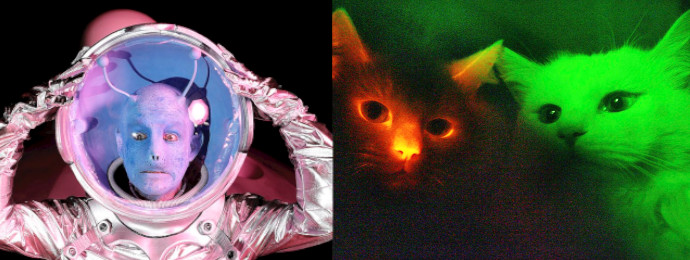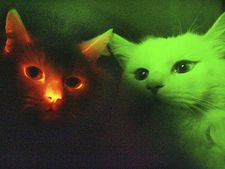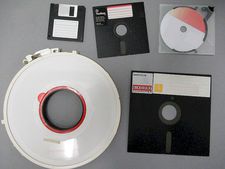-
BASE
subnavigation
BASE
- About us
- Laboratorium
- Career
- Laws and regulations
- Legal Basis
- Manual on Reactor Safety and Radiation Protection
- 1A Nuclear and radiation protection law
- 1B Other laws
- 1C Transport law
- 1D Bilateral agreements
- 1E Multilateral agreements
- 1F EU law
- 2 General administrative provisions
- 3 Announcements of the BMU and the formerly competent BMI
- 4 Relevant provisions and recommendations
- 5 Nuclear Safety Standards Commission (KTA)
- 6 Key committees
- Annex to the NS Handbook
- A 1 English translations of laws and regulations
- Dose coefficients to calculate radiation exposure
- BASE topics in the Bundestag
-
Topics
subnavigation
Topics
Nuclear Safety
Interim Storage / Transport
-
News
subnavigation
FAQ: "Nuclear priests", "radiation cats" and field of thorns
Popular science theories on how to label nuclear waste

![]() Source: pa / dpa / Geisler-Fotopress | Tschiponnique Skupin / pa / AP | C.i Byung-kil
Source: pa / dpa / Geisler-Fotopress | Tschiponnique Skupin / pa / AP | C.i Byung-kil
Long-term documentation is often subject to public scrutiny, sometimes due to bizarre and unusual proposals that have little to do with scientific solutions. Here is an overview of popular scientific ideas and their scientific categorisation:
Is the information in the long-term documentary also directed at completely different creatures or even aliens?show / hide

![]() Source: pa / dpa / Geisler-Fotopress | Tschiponnique Skupin
Source: pa / dpa / Geisler-Fotopress | Tschiponnique Skupin
The goal of final disposal is comprehensively defined as the protection of "people and the environment" (§ 1 StandAG). And long-term documentation tries to keep as few assumptions as possible with regard to who can use the information. But there are fundamental limits to what long-term documentation can achieve.
Long-term documentation attempts to facilitate well-informed decisions on the repository in the future. This can mean, for example, warning against deep drilling and pointing out how the safety of the repository can be assessed. This information is prepared in as universal a form as possible and is accompanied by measures to preserve the memory.
However, it will inevitably be a communication by signs. In many cases, this will be sufficient. For example, anyone with sufficient technical and scientific skills to drill a borehole to the repository should be able to decipher the warnings in the long-term documentation. Those who cannot drill such a borehole do not necessarily have to understand the warnings. However, theoretically speaking, a situation where communication fails and signs are not understood is always conceivable. The long-term documentation measures serve to protect the information against as many negative influences as possible.
What are nuclear priests and what do they have to do with the repository?show / hide
In addition to the work of the Human Interference Task Force (see Atomic Semiotics), Professor of Semiotics Thomas Sebeok in 1984 once again addressed the problem of warning people in the distant future of unintentional intrusion into a deep geological repository for radioactive waste. At the centre of his considerations was the fact that language and the meaning of signs are subject to permanent change. Over the enormous periods of time involved in the final disposal of high-level radioactive material, these signs must be constantly updated in order to remain comprehensible in the future.
His proposal is, therefore, based on the oral tradition of religions. For centuries, the meaning of a message was passed on, even though the language and situation of the people changed considerably. He recommended to assign this task to an exclusive group of people, whom he called - in a deliberately dramatic way - atomic priests. The knowledge of what is actually buried underground should remain the exclusive knowledge of this group alone. The self-appointing group - similar to a lodge or brotherhood - was to develop a wide variety of means such as rituals, myths and stories and adapt them to the times in order to keep people away from the repository site.
Sebeok's proposal has repeatedly met with great interest. This is probably not least due to its name. However, it addresses key points for BASE's work. A system of continuous knowledge transfer is needed to maintain the legibility and comprehensibility of the information. Even in the distant future, people must be able to understand the safety significance of repositories located deep underground. In contrast to his proposal, however, BASE is now striving to make knowledge available to as much of society as possible. The question of responsibility is also important. Especially when you think of times long after the repository has been sealed.
What is atomic semiotics?show / hide
Semiotics is the study of signs and sign processes. It is the basis for many scientific disciplines that deal with communication in the broadest sense. Semiotics was used for the first time in the 1984 deliberations of the Human Interference Task Force (HITF) to protect people from unintentional intrusion into a deep geological repository for radioactive waste in the distant future. To cope with linguistic change over very long periods of time, the recommendations are to write the same message in several languages and to supplement it with generally understandable drawings such as pictograms.
Some mechanisms for preserving knowledge about repositories involve the use of signs. A key example is the above-ground or underground marking of the site. This refers to smaller or larger structures that indicate the presence of the repository and the existence of more detailed information. However, the meaning of signs is also subject to change - as emphasised by the HITF. A robust system for preserving knowledge is therefore not based solely on atomic semiotics.
What are "ray cats" and do they play a role at BASE?show / hide

![]() Source: picture alliance / ASSOCIATED PRESS | Choi Byung-kil
Source: picture alliance / ASSOCIATED PRESS | Choi Byung-kil
Françoise Bastide and Paolo Fabbri presented the idea of the "ray cat" in an article in the Zeitschrift für Semiotik (Journal for Semiotics) in 1984. In addition to issuing warnings at the disposal site using language and symbols, they were intended to warn people of the presence of radioactive radiation.
The basis for their idea was that cats have accompanied humans for a long time, whether as pets or useful hunters of rodents. Their approach was to genetically modify cats so that they change their coat colour on contact with radiation. However, this alone would not be an understandable warning. Additional stories and songs would therefore have to be passed on for people to make the connection between colour change and danger.
The idea of breeding ray cats is a complex and ethically questionable one. So far, there are no research findings that suggest its realisation is within reach. BASE does not intend to conduct research in this area.
What is the field of thorns and is something like this also conceivable in Germany?show / hide
Michael Brill's idea, also known as the "Landscape of Thorns", was developed as part of the American repository project "WIPP". Based on the approaches of the HITF from the 1980s, a large-scale surface design in the form of a landscape of thorns is outlined at the final disposal site. This was intended to create such a sense of unease in people, even in the distant future, that they would stay away from the repository site.
Several concepts were developed in the USA in the early 1990s to protect people from unintentional intrusion into a deep geological repository for radioactive waste. As language and the meaning of symbols change over time, messages written in this form are at risk of not being understood or even misinterpreted. For this reason, proposals for a deterrent, architectural design of the surface above the repository were also devised as part of the so-called "Marker Panel" in 1993.
The concepts of the Marker Panel were developed for a remote repository site in the desert of New Mexico in the USA. As such, they cannot simply be transferred to the situation in Germany. Marking the repository site is an important element in preserving the memory of the repository. However, a change in thinking has taken place since the early 1990s. Today's approaches focus less on deterrence and more on education and information. These aspects would also take centre stage in a German approach.
Which storage media are used in long-term documentation?show / hide
The choice of storage media is one of many factors in the long-term preservation of information. This applies to both digital information carriers (CDs, hard drives, memory chips, etc.) and analogue information carriers (e.g. different types of paper with different shelf lives). As long as there is an organisation like BASE that actively looks after the information inventory, the shelf life of today's standard storage media is already sufficient.
There are several copies of each piece of information, and if a storage medium becomes faulty or damaged, it is replaced. The same basic principle has allowed traditions from antiquity to survive to this day: new copies and translations have been created over the centuries.
More durable storage media are particularly important in the event that no organisation takes care of the information inventory in the future. However, it only makes limited sense to commit to a specific storage media technology today. This is because additional information will be created by the time the repository is closed and will need to be passed on to future generations. Until then, further advances in storage media technologies can be expected. BASE is monitoring and supporting corresponding research and development (e.g. Labest Paper and Labest Digital) to ensure that particularly durable storage media can be used at that time.
State of 2024.02.19
